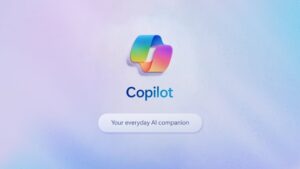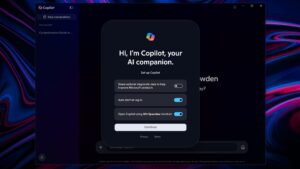Microsoft Unveils AI-Generated Quake II Demo While Acknowledging Certain Limitations

Microsoft Unveils a Playable Browser Version of Quake II
Introduction to the Development
Recently, Microsoft made an exciting announcement by launching a browser-based version of the iconic video game Quake II. This playable level acts as a demonstration for the gaming capabilities of Microsoft’s Copilot AI platform. However, it is important to note that this experience differs from traditional gameplay, as Microsoft itself acknowledges that it is more experimental in nature.
How to Access and Play the Demo
If you’re curious to give it a try, you can easily jump into the action. Simply visit the demo page and use your keyboard to explore a specially designed level of Quake II for a limited time. You’ll find that you can engage with the environment for a couple of minutes before encountering a time constraint.
AI Integration in Gaming
In a detailed blog post, Microsoft researchers have elaborated on their work with a series of AI models known as the Muse family, specifically designed for video games. The fascinating part is that these models allow players to interact using keyboard or controller inputs. Players can see the immediate consequences of their actions, essentially letting them step inside the AI-generated environment.
The Quake II Model
To showcase these capabilities, the Microsoft team trained their AI on a level from Quake II, which they have due to their acquisition of ZeniMax Media. The researchers described their excitement, stating, “We were able to play inside the world that the model was simulating.” Players can navigate, adjust the camera, jump, crouch, and even destroy objects, akin to the original Quake II gameplay.
Understanding the Limitations
While the AI-driven demo presents some fascinating dynamics, the researchers pointed out that it’s primarily meant for research purposes. It’s best considered as “playing the model” rather than an authentic gaming experience. There are notable limitations, including:
- Enemies exhibit blurry visuals.
- Damage and health indicators often lack accuracy.
- The AI struggles with object permanence, forgetting elements that are not in view for about 0.9 seconds.
Interestingly, some players have found amusement in this shortcoming; for example, you can spawn or defeat enemies by briefly looking away.
Player Reactions
Reactions to the tech demo have been mixed. Notably, game designer Austin Walker expressed his disappointment with the concept. In a gameplay video, he shared his experience of becoming "trapped in a dark room." Many players have echoed similar frustrations, admitting that the interface might not be as friendly—especially for those who struggle with first-person shooters.
AI and Game Preservation Debate
The conversation about the role of AI in gaming escalated when Phil Spencer, Microsoft’s Gaming CEO, discussed how AI models could assist in game preservation and facilitate playing classic games across various platforms. Walker raised concerns that such statements demonstrate a misunderstanding of how games function at their core.
He emphasized that every element—such as code, design, 3D art, and audio—contributes to unique gameplay experiences, including unexpected and unpredictable moments that enrich player engagement. Without the ability to regenerate these foundational aspects, he argues, players may miss out on the thrilling unpredictability that makes games like Quake II exciting.
Wrapping Up the Exploration
The browser-based Quake II demo reflects Microsoft’s innovative approach to integrating AI into gaming environments, even as it grapples with the complexities of game preservation and authenticity. While players can interact with the model in an engaging way, understanding its limitations and context is essential for appreciating the future of gaming technology.






